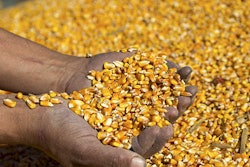
Rains Slow Harvest in Southern Brazil
- Rainfall has been moving southwest across Brazil and this trend will continue over the next week bringing moderate to heavy rain into grain production areas.
- Flooding is expected and the persistence of rain will raise some quality concerns while delaying early season maturation and harvest progress.
- AgRural estimated Brazilian had harvested just 0.7% of the planted area as of January 21.
- Last year at this time, nationwide harvest was 4.2% complete.
- Agroconsult estimates no more than 5 million tonnes of the new soy crop will be harvested in January, less than half the volume for the month last year.
- Planting and now harvesting delays may also push back planting of the second corn crop.
- Brazil's second corn harvest represents about 75% of the country's output, and some of it may be planted after the ideal window.
- In some areas, especially where soybeans were planted later, the rainfall will be beneficial.
FBN’s Take On What It Means: Looking at shipping data, the delayed harvest means Brazil will be unable to export as much during the early part of the season compared to most years. This is pushing demand back to the US, where China continues to purchase large quantities of soybeans for February.

Attaché Report on Australia
- Wheat production is estimated at 31 million tonnes, more than double last year, and the second highest on record.
- Exports are projected at 21 million tonnes, the third highest on record, compared to the USDA forecast of 20 million.
- Barley production is seen at 11.5 million tonnes, also the second largest on record but the attaché sees exports at 4.7 million tonnes, or 300,000 tonnes below USDA’s latest outlook.
- While Australia is working its way into barley markets outside China, China was its top destination.
- Sorghum production is forecast at 1.2 million tonnes with exports at 500,000 tonnes; China is a key destination.
FBN’s Take On What It Means: Australia finally had a break to its drought and large crops were the result. But, the trade war with China has resulted in additional opportunities for other origins. Unfortunately, strong prices and higher freight costs leave US wheat supplies uncompetitive to most Southeast Asian destinations.
FBN Market Advisory services are offered by FBN BR LLC, dba FBN Brokerage, FBN BR and FBN Market Advisory (NFA ID: 0508695)
The risk of trading futures and options can be substantial and may not be suitable for all investors. Past performance is not necessarily indicative of future results.
This is not an offer or solicitation in any jurisdiction where we are not authorized to do business or where such offer or solicitation would be contrary to the local laws and regulations of that jurisdiction, including, but not limited to, persons residing in Australia and Canada.










